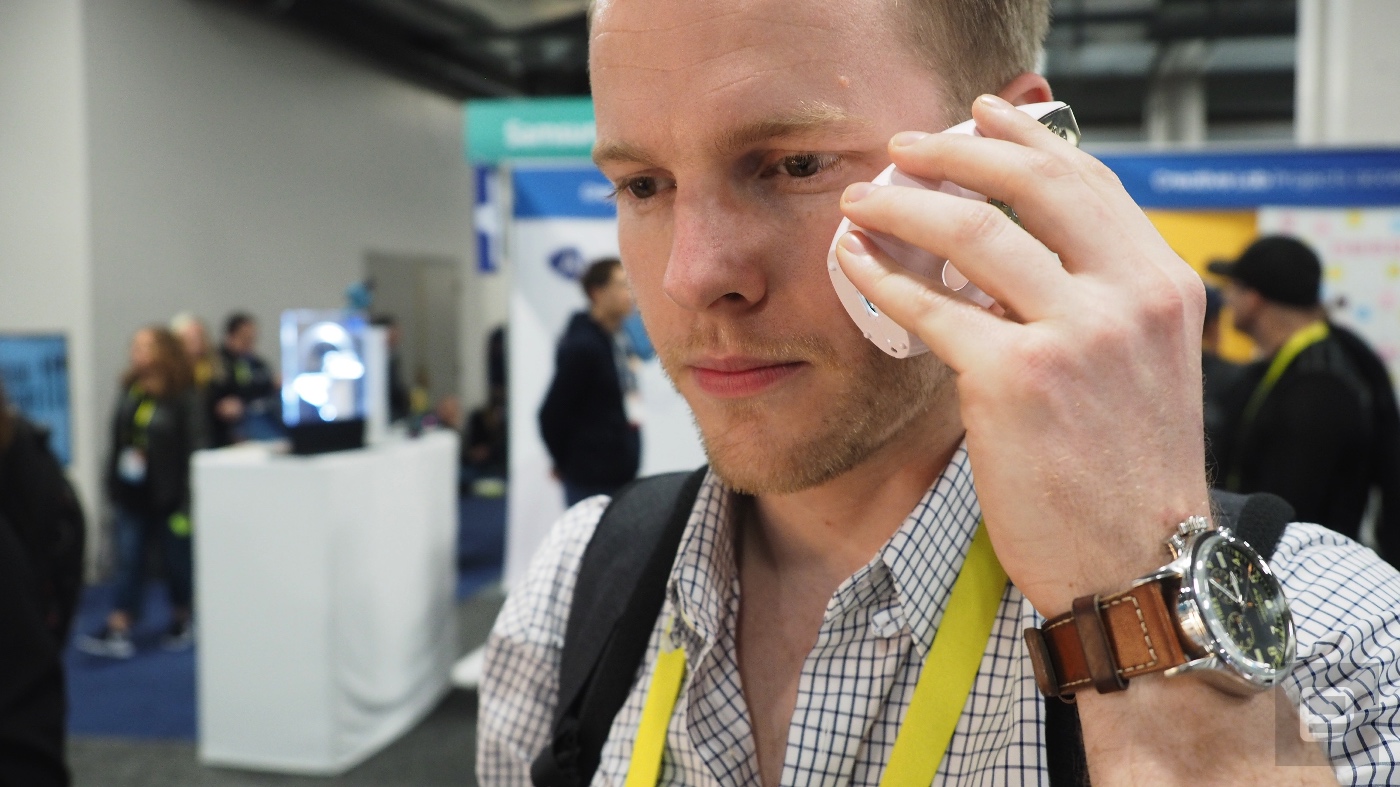
No, I'm not holding a phone. The thing I'm holding in my hand above is analyzing my skin for its hydration levels, redness and melanin. Even better, it's going to try and fix any issues with a combination of light therapy and "micro-needle" patches filled with skin goodness. Make me beautiful, Samsung.
Gallery: Samsung's S-Skin at CES 2017 | 6 Photos
 6
6



 +2
+2
The S Skin is one of several experimental products to come from Samsung's C Lab department. It's an effort by the company to tap into new potential businesses, offering employees the chance to see their ideas to market -- and that's important for a company that's often too risk averse and stubborn for its own good. Samsung's already had a few minor successes with its experimental C Lab products. Several gadgets that graduated from its booth during CES 2016 are now on sale. My pick from the new crowd is S Skin.

The handheld gadget assesses your skin through a combination of cameras, light sensors and conductivity sensors. It beams light at your face, analyzing the results that bounce back to the sensors. At the same time, those two metal contacts help to gauge the conductivity of your skin to help estimate moisture levels.
Once it figures out what your skin is lacking (if it isn't perfectly healthy) it will offer up a light-based care program. For my dry, slightly aggravated skin -- that's what happens when you attend a tradeshow in Vegas -- it suggested a course of red light to calm and soothe my sensitive skin. (I could probably benefit from drinking more water too, with only 35 percent of skin hydration.)
That's not all: If and when it launches, the S Skin will come with micro-needle patches that can deliver appropriate nutrient packs to the skin. The color changing patches will help confirm you've applied them correctly. These will contain similar ingredients you'd find in skincare products -- collagen was mentioned by the spokesperson. The patches themselves are rough to the touch, but my treatment was merely light based.
It would take more than one treatment to make a noticeable difference to your skin. I have more faith in the analysis and the patches than the light therapy part, but extended use (and some more visible science) might help convince me -- if not Samsung execs and the great Kickstarter masses.
The product is currently at the concept-validation stage, meaning the team is looking to hear back from media, consultants and you, the dear public, over the course of CES.
Click here to catch up on the latest news from CES 2017.



 +2
+2